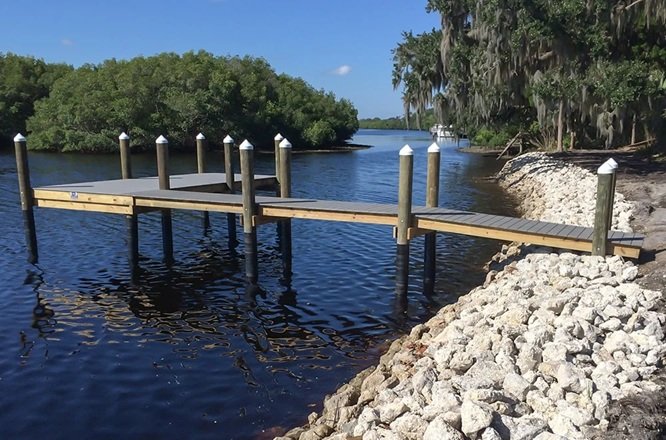Coastal areas are vital ecosystems that support diverse wildlife, human activities, and economic endeavors. However, these regions face increasing threats from climate change, rising sea levels, and severe weather events. As coastal erosion becomes a pressing issue, effective protective measures are essential to safeguard the shoreline, communities, and infrastructure. One of the most effective solutions in coastal management is the construction of rock revetment seawalls. This article explores the numerous benefits of rock revetment seawalls for coastal protection, highlighting their effectiveness, ecological impact, and long-term sustainability.
What is a Rock Revetment Seawall?
Rock revetment seawalls are structures built along coastlines to absorb and deflect wave energy, thereby reducing the impact of coastal erosion. Constructed from large rocks, boulders, or concrete, these seawalls create a barrier that protects the land behind them from storm surges and high tides. The design of rock revetment seawalls allows for the dissipation of wave energy, which minimizes the potential for erosion and damage to coastal properties. Unlike traditional seawalls that can be rigid and unyielding, rock revetments offer a more flexible approach to coastal protection, adapting to changing conditions over time.
Effective Erosion Control
One of the primary benefits of rock revetment seawalls is their effectiveness in controlling coastal erosion. Research indicates that coastlines protected by rock revetments experience significantly less erosion compared to unprotected areas. For example, a study conducted by the U.S. Geological Survey found that areas with rock revetments saw a reduction in erosion rates by up to 70% during storm events. This erosion control is crucial for protecting not only the land but also the infrastructure such as roads, homes, and businesses that rely on coastal stability.
Wave Energy Dissipation
Rock revetment seawalls are designed to dissipate wave energy, which is critical in reducing the force of incoming waves. By absorbing and refracting wave energy, these structures prevent the high-energy waves from causing significant damage to the shoreline. According to the Coastal Engineering Research Center, rock revetment seawalls can effectively reduce wave height by up to 50% at the shoreline. This property not only protects the physical landscape but also mitigates risks associated with flooding and storm surges, making coastal areas safer for residents and visitors alike.
Environmental Benefits
While seawalls are often perceived as purely structural solutions, rock revetment seawalls can also provide environmental benefits. These structures can create habitats for marine life, including fish and invertebrates, as the spaces between the rocks allow for natural colonization. A study published in the Journal of Coastal Research indicated that rock revetments can enhance biodiversity by providing shelter and breeding grounds for various species. Additionally, these structures can contribute to the overall health of coastal ecosystems by reducing turbidity and allowing sunlight to penetrate the water, promoting the growth of seagrasses and other vital marine plants.
Cost-Effectiveness
Investing in rock revetment seawalls can be a cost-effective solution for coastal protection in the long term. Although the initial construction costs may be higher than other methods, such as sand dune restoration, the durability and longevity of rock revetments often result in lower maintenance and repair expenses. The U.S. Army Corps of Engineers reported that rock revetments can last for decades with minimal upkeep, making them a financially sound option for communities facing erosion challenges. Additionally, the protection offered by these structures can preserve property values and reduce the need for costly emergency response efforts during severe weather events.
Community and Economic Resilience
Rock revetment seawalls play a vital role in enhancing community resilience against climate change impacts. By providing a protective barrier against storm surges and flooding, these structures help to safeguard essential infrastructure, such as roads, utilities, and public services. This protection is crucial for maintaining economic stability in coastal areas, as disruptions to infrastructure can lead to significant financial losses. According to the National Oceanic and Atmospheric Administration (NOAA), for every dollar invested in coastal resilience measures like rock revetments, communities can save up to six dollars in avoided damages from natural disasters.
Adaptability to Climate Change
As climate change continues to impact sea levels and weather patterns, rock revetment seawalls offer adaptability and flexibility in coastal protection. These structures can be designed and engineered to meet specific local conditions, allowing for adjustments as environmental factors change over time. For instance, communities can increase the height or extend the length of existing rock revetments in response to rising sea levels or more frequent storm events. This adaptability ensures that coastal defenses remain effective and relevant, providing long-term protection for vulnerable areas.
Complementary Coastal Management Strategies
Rock revetment seawalls can be integrated with other coastal management strategies to create a comprehensive approach to coastal protection. For example, combining revetments with natural defenses, such as restored wetlands or mangroves, can enhance overall resilience while promoting biodiversity and ecosystem health. The integration of different strategies allows for a more holistic approach to coastal management, ensuring that communities not only receive protection but also benefit from the ecological services provided by healthy coastal ecosystems.
Conclusion
Rock revetment seawalls present a valuable solution for coastal protection, offering numerous benefits that extend beyond mere structural integrity. Their effectiveness in controlling erosion, dissipating wave energy, and enhancing biodiversity makes them an essential tool in the fight against climate change and coastal degradation. Moreover, the cost-effectiveness, adaptability, and compatibility with other coastal strategies further solidify their role in promoting community and economic resilience. As coastal areas continue to face unprecedented challenges, investing in rock revetment seawalls can provide a sustainable pathway toward safeguarding our shorelines for future generations.
